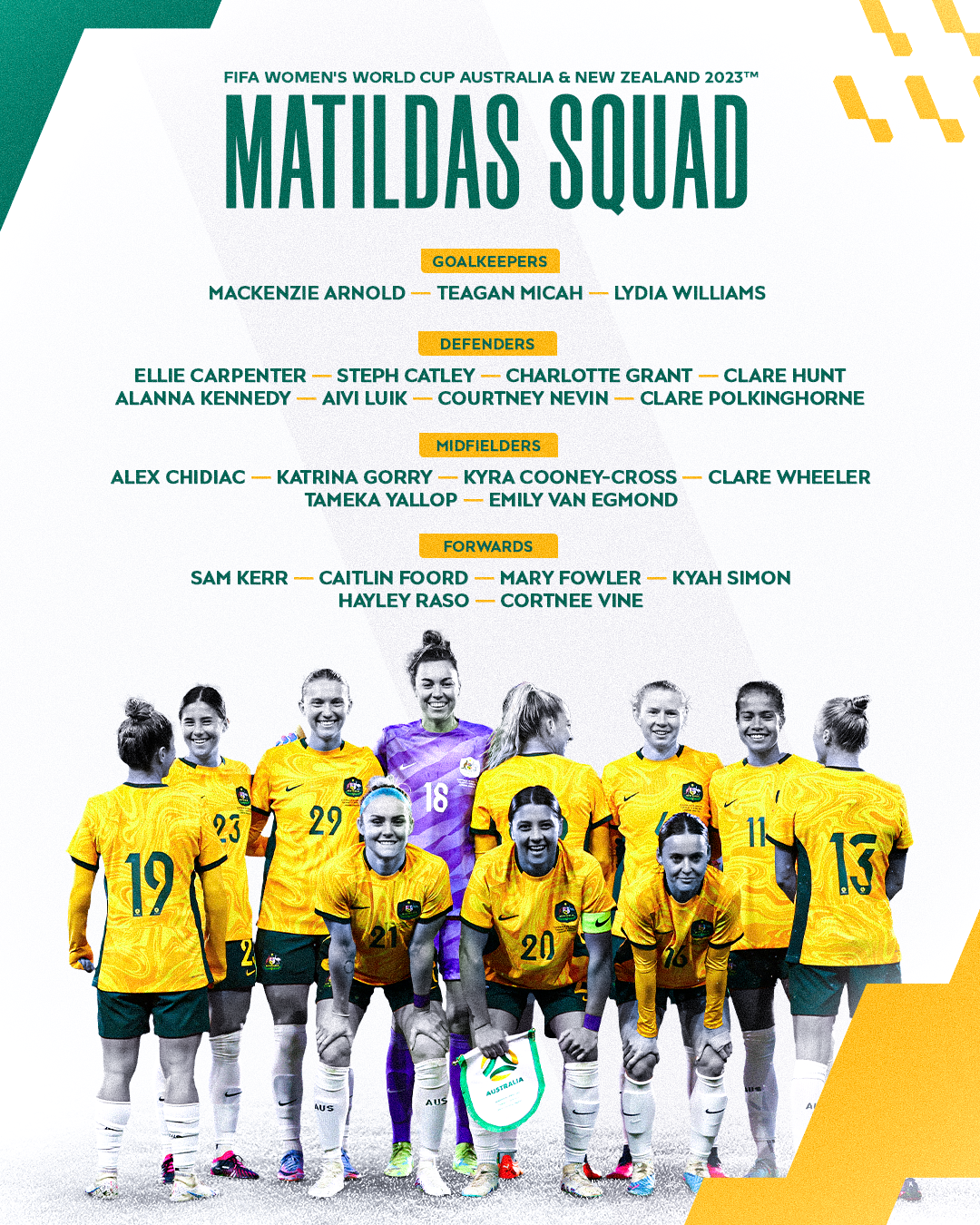In the end only three names were different to Asian Cup squad, but this group seems to mean business writes Tom Smithies.
The faces were familiar, the visages of Sam Kerr, Steph Catley and numerous other Matildas staring out from mobile posterboards in the room where their coach, Tony Gustavsson, was about to reveal his squad for the World Cup.
Standing at the back of the room, discreetly pushed close to a wall, was a posterboard that said only “Matildas” – but which had, among the faces on its reverse, one who wouldn’t be chosen in Larissa Crummer. It was the most poignant example of the dilemmas Gustavsson faced in choosing his 23 players for the World Cup from a long list of 29, and how some were that close to making the final cut until the 11th hour.
After most of those 29 had assembled for a three-week camp on the Gold Coast – their fitness tested and deepened – the Matildas boss went through what he termed one of the most difficult days of his lengthy coaching career, in choosing the ones who would get to play at a home World Cup.
VISIT KEEPUP’S WOMEN’S WORLD CUP HUB!
SQUAD ANALYSIS: Gustavsson leaves door open for last minute World Cup squad twist after ‘game changer’ gamble

Compounding Gustavsson’s headaches was the fact that four players were not released by clubs in Scandinavia to go to the Gold Coast camp because the FIFA window for the World Cup officially starts on July 10, and those clubs are still in season. Others, like Alex Chidiac and Emily van Egmond, came late as a compromise with their clubs.
In the end, though, Gustavsson had to make the calls across the board. Jada Whyman of Sydney FC was left out despite, in the words of another player, training the house down. Simon made it in despite the fact she has another month of rehab and fitness accrual to undergo, based on the advice of the sports scientists that her trajectory is remarkably good.
Though Crummer was one of the six cut from the 29 names on the longlist unveiled three weeks ago, it would seem an educated guess that she would be a forerunner among the reserves on standby in case Simon – still only eight months post an ACL operation – is ultimately deemed not quite fit enough at the final hurdle.
While it’s hard not to feel compassion for those who could see the World Cup so close but in the end couldn’t touch it, it’s also hard to argue with the names who Gustavsson decided would make it through. After all the debates about squad renewal and fresh blood – all to a backdrop of often painful results until just a few months ago – this is a squad to get enthused by as the last days tick down to the World Cup.
You can see the benefit of four more years of experience since the last World Cup in the eyes of some senior players. The touch of innocence that has often characterised Hayley Raso has been replaced by a glint of steel in her eyes. Caitlin Foord is finally comfortable – or at least less uncomfortable – in talking about the form and status that makes her one of Australia’s most feared players at the World Cup. Mackenzie Arnold can admit to the lack of confidence that used to bedevil her international appearances precisely because she now feels she belongs at this level.
Perhaps that’s why this squad feels different, even though only three names are different to the one selected by Gustavsson for the Asian Cup 18 months ago. One of those changes is hugely significant; Katrina Gorry, absent in India last year because of having just had a child, is pivotal to the way the team wants to play in her role as the No 6.
Clare Hunt, meanwhile, has come out of nowhere to astound her teammates with her poise and maturity at the heart of defence, despite not having yet played 50 professional games. Alex Chidiac is the third change from the Asian Cup, bringing a welcome point of difference on the bench.
But much of the how has changed as well as the who in those 18 months. There is a formation with which the players seem comfortable, and there is depth through player development; Charlotte Grant improved immeasurably in the injury absence of Ellie Carpenter, Raso now seems to be a woman on a mission when wearing national colours, and the cover is there in every position to suggest that one injury will not require a recasting of much of the team.
Of course, so much about tournament success is about timing, both individually and as a team. A year ago, in the wake of a whalloping from Spain, there were serious question marks around Gustavsson. Now Australia seem settled and ready, while their Group B opponents all have various issues to address.
Whether Gustavsson’s selections are on course for home glory is a question too early to answer; as several players have noted, the first game against Ireland is the most important fixture for now and will serve as a powerful bellwether. But it’s hard not to look down that squad and feel that optimism is well justified.




